Last Updated on January 14, 2025
As my taxi was driving down the island’s main street and we reached a touristy part that was lined with hotels, casinos and restaurants, I started to doubt my decision to come to Phu Quoc. Was I too late? Had this island paradise been completely destroyed, turned into a cheap package vacation destination, as several blogs and websites had suggested?
Even before arriving at my guesthouse, I could already tell that it wasn’t the serene island getaway anymore that some travel guides (still) described it as.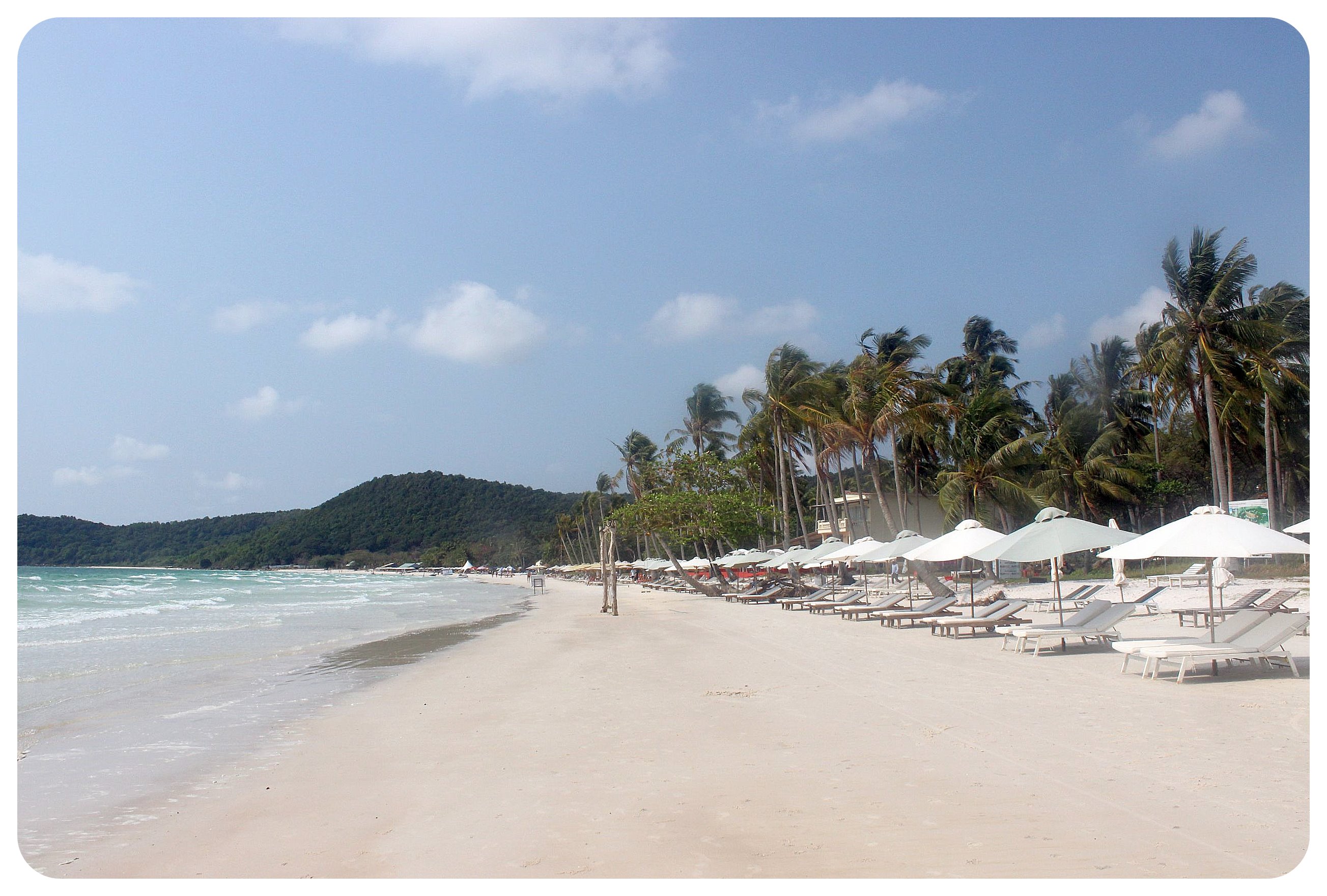 I based myself in the Long Beach area for my stay, knowing that this was the part of the island with the most places to sleep and eat – and of course right on the beach. 20 kilometers of beach, stretching all the way along the southern part of the island’s western shore. Long Beach is also not far from the island’s main town, Duong Dong, where the popular night market is held.
I based myself in the Long Beach area for my stay, knowing that this was the part of the island with the most places to sleep and eat – and of course right on the beach. 20 kilometers of beach, stretching all the way along the southern part of the island’s western shore. Long Beach is also not far from the island’s main town, Duong Dong, where the popular night market is held. During my first two days on the island, I didn’t venture far from Long Beach, which is long enough to make for hour-long walks in each direction. I didn’t dislike the beach, but I also wasn’t too impressed by it, and the many resorts that were lining it. None of them seemed overly appealing, each one setting up rows and rows of sun chairs on the beach every morning, which soon would fill up with Western tourists hungry for sun.
During my first two days on the island, I didn’t venture far from Long Beach, which is long enough to make for hour-long walks in each direction. I didn’t dislike the beach, but I also wasn’t too impressed by it, and the many resorts that were lining it. None of them seemed overly appealing, each one setting up rows and rows of sun chairs on the beach every morning, which soon would fill up with Western tourists hungry for sun. Along the main street, where most of the restaurants are, I was constantly approached in Russian, and I realized that this was the part of the island where most package vacationers spent their holidays. Restaurant menus were written in Cyrillic letters, and pharmacies were praising their cheap drugs in Cyrillic, too.
Along the main street, where most of the restaurants are, I was constantly approached in Russian, and I realized that this was the part of the island where most package vacationers spent their holidays. Restaurant menus were written in Cyrillic letters, and pharmacies were praising their cheap drugs in Cyrillic, too. One thing I was tremendously looking forward to was the Night Market. I still have vivid memories of the night markets in Thailand which were one my favorite things there, with plenty of delicious food to devour. The night market in Phu Quoc fell flat in comparison, however. The food was very seafood and fish-centric (to be expected on an island), but I also kept seeing the same things over and over again, just sold by different vendors.
One thing I was tremendously looking forward to was the Night Market. I still have vivid memories of the night markets in Thailand which were one my favorite things there, with plenty of delicious food to devour. The night market in Phu Quoc fell flat in comparison, however. The food was very seafood and fish-centric (to be expected on an island), but I also kept seeing the same things over and over again, just sold by different vendors. On my third day, I finally worked up the courage to rent a scooter and explore the island beyond Long Beach. After a scooter accident in Thailand in 2011 that left me so traumatized that I wouldn’t rent a scooter again until 2017, six years after the incident, I am still a little wary of renting scooters. But after only a couple of days on Phu Quoc I had seen how long it took me to walk to places that seemed only a stone’s throw away on the map, and I knew if I wanted to see more of the island I had no choice but to rent a scooter.
On my third day, I finally worked up the courage to rent a scooter and explore the island beyond Long Beach. After a scooter accident in Thailand in 2011 that left me so traumatized that I wouldn’t rent a scooter again until 2017, six years after the incident, I am still a little wary of renting scooters. But after only a couple of days on Phu Quoc I had seen how long it took me to walk to places that seemed only a stone’s throw away on the map, and I knew if I wanted to see more of the island I had no choice but to rent a scooter. Bus connections barely exist, and hopping from beach to beach by taxi would be possible, but not all that easy, since taxis are quite rare outside of the town, the airport and the Long Beach area. Plus, being able to stop to take photos and randomly follow a sign to a sight along the way is something you cannot do unless you rent a scooter.
Bus connections barely exist, and hopping from beach to beach by taxi would be possible, but not all that easy, since taxis are quite rare outside of the town, the airport and the Long Beach area. Plus, being able to stop to take photos and randomly follow a sign to a sight along the way is something you cannot do unless you rent a scooter.
If you’ve never rented a scooter in Asia, this is pretty much how it goes:
I walk up to the owner of my guesthouse. ‘Um, do you rent scooters?’
Owner: ‘Yes, here, take a look.’ Points to half a dozen scooters that have seen better days.
Me: ‘How much?’
Owner: ‘120k a day (US$5.20).
Me, nodding, ‘Okay.’
Owner walks away and returns with keys which he hands me, and wishes me a good day.
I don’t think I’ve ever been asked for my drivers license when renting a scooter in Asia. 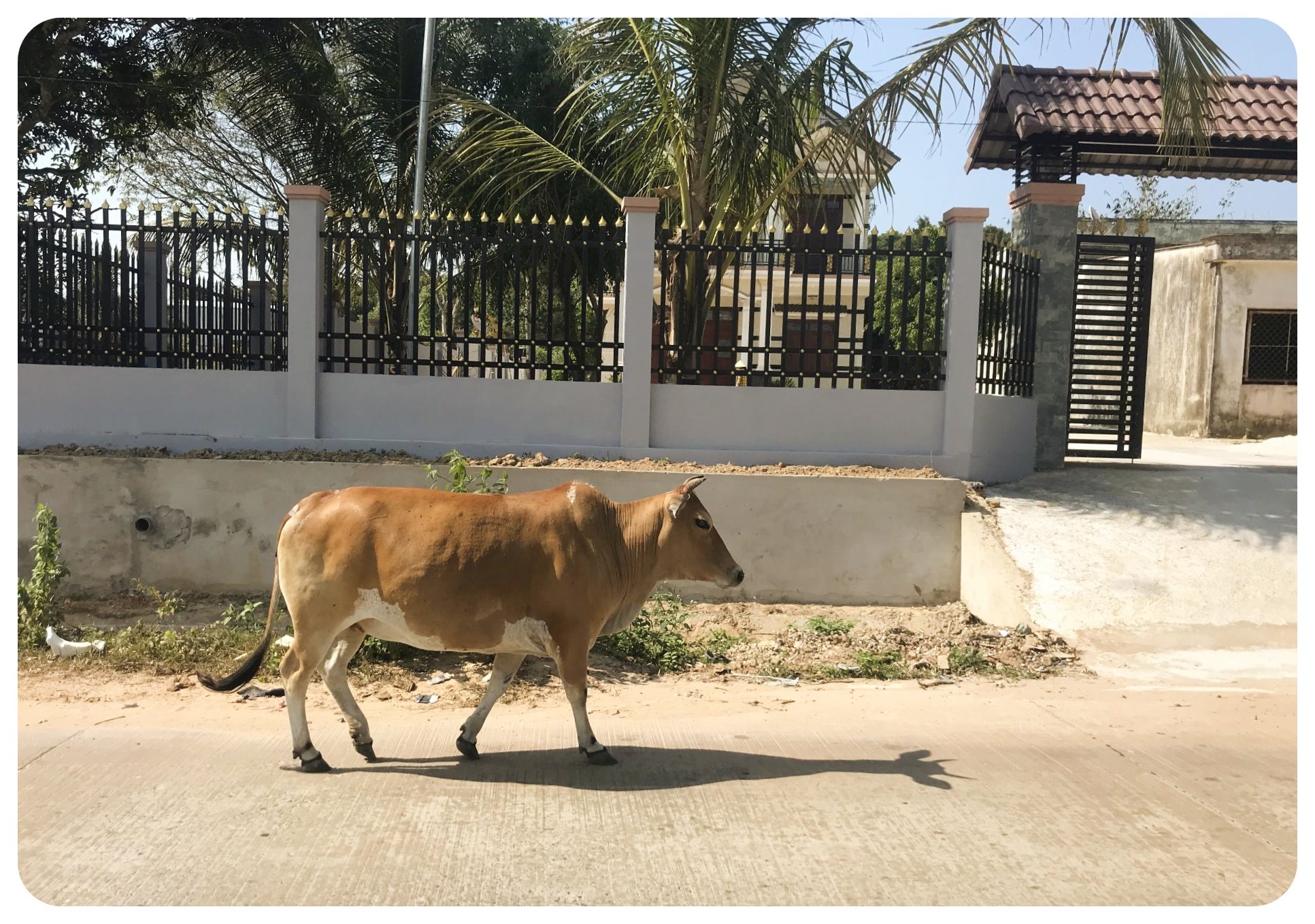 And so off I went, slowly getting accustomed to the not-so-great bike. I took advantage of having wheels and drove into town for breakfast, because Google had revealed that were two vegan restaurants which meant I could finally have a Vietnamese (veggie) breakfast.
And so off I went, slowly getting accustomed to the not-so-great bike. I took advantage of having wheels and drove into town for breakfast, because Google had revealed that were two vegan restaurants which meant I could finally have a Vietnamese (veggie) breakfast.
At first, I was terrified by the traffic and especially all the scooters, but as soon as I left Duong Dong, I started feeling safer and eased into riding a scooter again. Suddenly, the roads were empty, gone were the droves of scooters that were surrounding me in the island’s main town. My first stop was Ong Lang Beach, a beach just northwest of Duong Dong on the northeastern coast of the island. On the way there I got lost and ended up in a small village, which gave me a first taste of what Phuc Quoc was like beyond the touristy areas. The villagers were gathering around market stalls and fishermen were bringing in the morning catch on motorbikes. There was not a single tourist in sight.
My first stop was Ong Lang Beach, a beach just northwest of Duong Dong on the northeastern coast of the island. On the way there I got lost and ended up in a small village, which gave me a first taste of what Phuc Quoc was like beyond the touristy areas. The villagers were gathering around market stalls and fishermen were bringing in the morning catch on motorbikes. There was not a single tourist in sight. When I arrived in Ong Lang beach about half an hour later, I couldn’t believe how different it was from Long Beach. There were only three or four beach bars here, with a couple of rows of sun chairs in front of each one, and that was it. None of the bars was busy, in each one, only a few chairs were taken and the rest of the beach was completely empty. It was heavenly. I could have easily spent all day here, but after a banana smoothie and an hour of sunbathing, I decided that it was time to head further north.
When I arrived in Ong Lang beach about half an hour later, I couldn’t believe how different it was from Long Beach. There were only three or four beach bars here, with a couple of rows of sun chairs in front of each one, and that was it. None of the bars was busy, in each one, only a few chairs were taken and the rest of the beach was completely empty. It was heavenly. I could have easily spent all day here, but after a banana smoothie and an hour of sunbathing, I decided that it was time to head further north. My next stop was a small beach in the northwestern corner of Phu Quoc: Gan Dhau Beach. On my way there I realized for the first time how big the island is – it took me over forty minutes to get here from Ong Lang Beach, and it had taken me nearly as long to get there from Long Beach. On the way to the island’s northwestern tip I drove by the second most bizarre thing I saw during my entire stay: the gigantic Vinpearl Amusement Park.
My next stop was a small beach in the northwestern corner of Phu Quoc: Gan Dhau Beach. On my way there I realized for the first time how big the island is – it took me over forty minutes to get here from Ong Lang Beach, and it had taken me nearly as long to get there from Long Beach. On the way to the island’s northwestern tip I drove by the second most bizarre thing I saw during my entire stay: the gigantic Vinpearl Amusement Park. Self-described as ‘the largest and most modern amusement park in Southwest Vietnam’, this park does not only offer thrill rides and water slides, but right next door, a safari park with 2,000 animals, which had me wonder how the heck (and from where!?) they got all these animals.
Self-described as ‘the largest and most modern amusement park in Southwest Vietnam’, this park does not only offer thrill rides and water slides, but right next door, a safari park with 2,000 animals, which had me wonder how the heck (and from where!?) they got all these animals.
It also had me wonder: Is this what a relatively small tropical island needs? An amusement and a safari park? Well, apparently yes, but I didn’t see a single person on any of the water slides either time I rode by the park. My original plan was to check out the famous Sao Beach, but when I saw that it’d take me nearly 90 minutes to get all the way down to the southwest of the island, I changed my plans and decided to stay in the north of the island. My next stop was Thom Beach, a small beach on the northeastern tip of Phu Quoc that barely sees any tourists. I took the advice of Tom of Vietnam Chronicle and stopped at Local Beach Bar, a little bar and homestay run by a lovely family, for a refreshment, but since it was low tide, I didn’t stay long – I feel like the beach is nicer during high tide. I used Vietnam Chronicles’ Phu Quoc beaches article as my main travel guide to the island, since I felt that our taste in beaches was pretty similar.
My original plan was to check out the famous Sao Beach, but when I saw that it’d take me nearly 90 minutes to get all the way down to the southwest of the island, I changed my plans and decided to stay in the north of the island. My next stop was Thom Beach, a small beach on the northeastern tip of Phu Quoc that barely sees any tourists. I took the advice of Tom of Vietnam Chronicle and stopped at Local Beach Bar, a little bar and homestay run by a lovely family, for a refreshment, but since it was low tide, I didn’t stay long – I feel like the beach is nicer during high tide. I used Vietnam Chronicles’ Phu Quoc beaches article as my main travel guide to the island, since I felt that our taste in beaches was pretty similar. I ended my day of exploring at Rory’s Wreck, which was still in the process of being finished. Rory used to have a popular beach bar in Long Beach, but decided it was time for a change. At his new place, a huge bar made to look like a wooden ship, there was a pool being added when I was visiting – and I wished that it was already finished, because the beach here wasn’t too inviting. I did enjoy the quieter vibe on the east coast, however, and decided to see more of it the following day.
I ended my day of exploring at Rory’s Wreck, which was still in the process of being finished. Rory used to have a popular beach bar in Long Beach, but decided it was time for a change. At his new place, a huge bar made to look like a wooden ship, there was a pool being added when I was visiting – and I wished that it was already finished, because the beach here wasn’t too inviting. I did enjoy the quieter vibe on the east coast, however, and decided to see more of it the following day.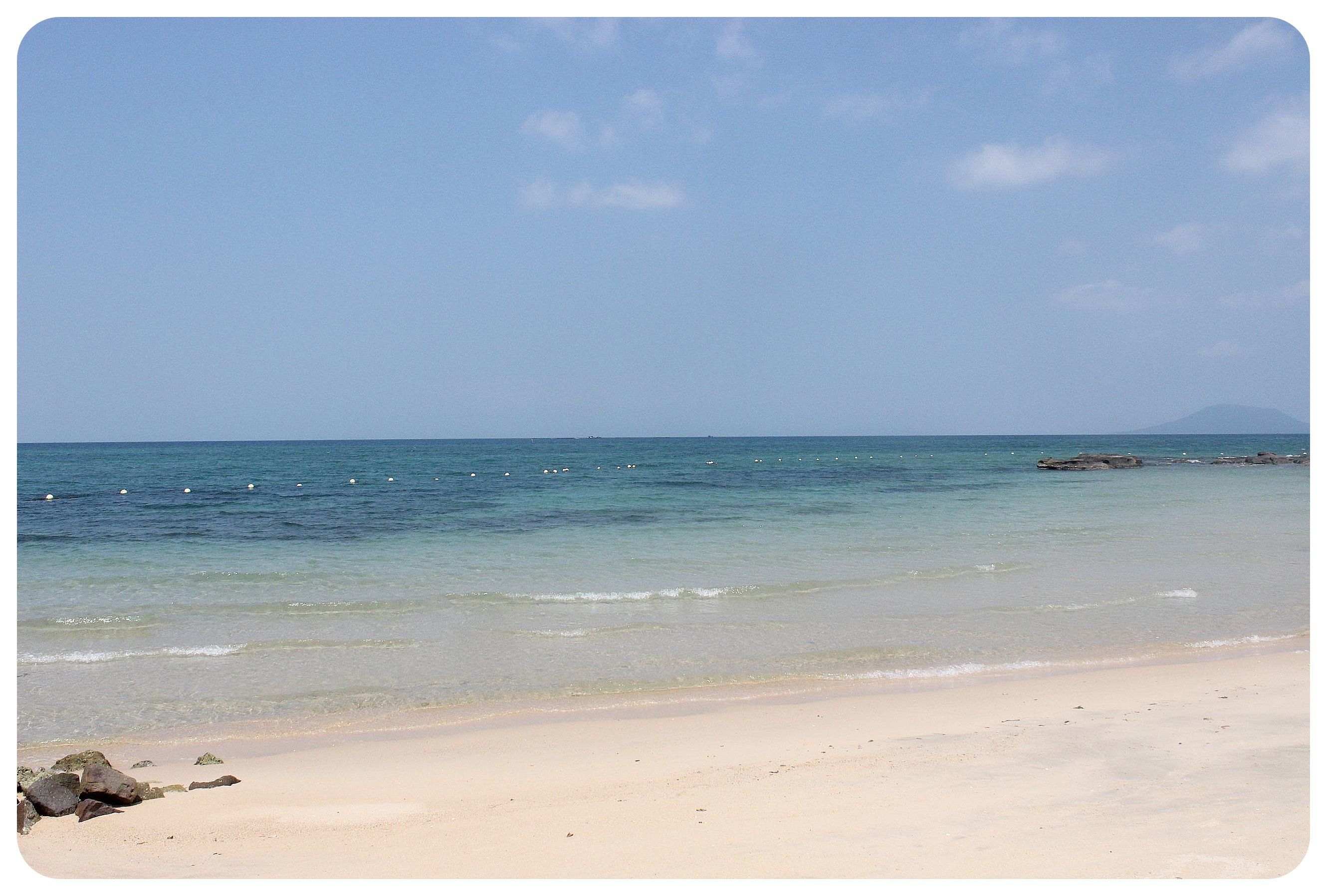 The next morning, I hopped on my scooter like a pro – my first stop was Sao Beach. This beach was supposedly Phu Quoc’s show stopper, a truly stunning beach with white, powdery sand, crystal clear water and palm trees lining the long half-moon shaped bay this beach was located in.
The next morning, I hopped on my scooter like a pro – my first stop was Sao Beach. This beach was supposedly Phu Quoc’s show stopper, a truly stunning beach with white, powdery sand, crystal clear water and palm trees lining the long half-moon shaped bay this beach was located in. But I had also read several articles that said Sao Beach was ruined now, and that what you find there these days isn’t at all what Sao Beach used to be, when, only a few years ago, you wouldn’t find much there except for a few adventurous backpackers.
But I had also read several articles that said Sao Beach was ruined now, and that what you find there these days isn’t at all what Sao Beach used to be, when, only a few years ago, you wouldn’t find much there except for a few adventurous backpackers.
Quoting Vietnam Chronicles: ‘Its increasing popularity led to haphazard, temporary construction of small resorts, bars, cafés, and restaurants; trash quickly built up – squeezed into the narrow freshwater creeks that feed onto the beach and into the sea; jet skis filled the waters with gasoline and broke the silence; even the husks of fresh coconuts – consumed in the hundreds by day-trippers each day – built up to clog the sand and the surf.’ After reading Tom’s take on it, which concluded it was a sad place and a sad sight, I almost didn’t want to go, but in the end I wanted to see what the fuss was all about and if the beach was really ruined. I read that you visit Sao Beach in the morning, you still have a good chance to get the ‘deserted beach’ experience this once was, and so I left as soon as I woke up and headed south.
After reading Tom’s take on it, which concluded it was a sad place and a sad sight, I almost didn’t want to go, but in the end I wanted to see what the fuss was all about and if the beach was really ruined. I read that you visit Sao Beach in the morning, you still have a good chance to get the ‘deserted beach’ experience this once was, and so I left as soon as I woke up and headed south.
The huge parking lot I arrived in was the first clue that this was indeed a popular beach, but when I arrived at around 8.30am, there was barely anyone around, and the beach restaurants were just opening up for the day. I started my exploration with a walk all the way to the northern end, which was still lined by palm trees. It seemed that most of them had been removed further south to make room for a few restaurants. But what I also discovered was that as soon as I passed the last sun chair, the beach became significantly dirtier. All of a sudden, I was walking through piles of trash instead of soft white sand. Apparently, the beach bars clean up their respective areas along the beach, but don’t bother beyond those.
I started my exploration with a walk all the way to the northern end, which was still lined by palm trees. It seemed that most of them had been removed further south to make room for a few restaurants. But what I also discovered was that as soon as I passed the last sun chair, the beach became significantly dirtier. All of a sudden, I was walking through piles of trash instead of soft white sand. Apparently, the beach bars clean up their respective areas along the beach, but don’t bother beyond those. I noticed the same thing when I walked all the way to the southern end of the beach: past the last restaurant, the beach started looking much less attractive. You can’t deny, however, the appeal of this beach: the white sand, the crystal clear water, looking out at an array of different shades of blue. The shallow water, that allows you to walk far out into the ocean without the water ever even reaching your hip, adds to the beauty.
I noticed the same thing when I walked all the way to the southern end of the beach: past the last restaurant, the beach started looking much less attractive. You can’t deny, however, the appeal of this beach: the white sand, the crystal clear water, looking out at an array of different shades of blue. The shallow water, that allows you to walk far out into the ocean without the water ever even reaching your hip, adds to the beauty. I did make the most of my lazy morning at Sao Beach, spending most of it on a swing in the ocean, my feet in the water every time I swung back and forth, and lounging in the sand with a Vietnamese iced coffee ($0.65) in my hand. The later it got, the less I was able to block out the growing noise of the arriving sun-seekers around me. The jet skies started roaring, larger groups arrived, enjoying a mid-morning beer, and a line of people forming in front of the swing that I had all to myself just an hour earlier to take Instagram-worthy pictures.
I did make the most of my lazy morning at Sao Beach, spending most of it on a swing in the ocean, my feet in the water every time I swung back and forth, and lounging in the sand with a Vietnamese iced coffee ($0.65) in my hand. The later it got, the less I was able to block out the growing noise of the arriving sun-seekers around me. The jet skies started roaring, larger groups arrived, enjoying a mid-morning beer, and a line of people forming in front of the swing that I had all to myself just an hour earlier to take Instagram-worthy pictures. When I left just after noon and saw several tourist buses pull into the parking lot, I felt like I’d made the decision to move on to my next stop at the exactly right time.
When I left just after noon and saw several tourist buses pull into the parking lot, I felt like I’d made the decision to move on to my next stop at the exactly right time.
I drove north, along the coast, with the intention to see more of what Tom calls the ‘east coast road beaches’ in his beach guide to Phu Quoc. On my way north, I stopped at Ham Ninh, a small fishing village in the central part of the island. I had read that this village would be a good place to get a taste of the life of the island’s fishermen, but to be honest, I found it quite touristy with lots of stalls selling tacky shell souvenirs and the long pier that led out into the sea lined with several floating restaurants. I didn’t waste much time there and went further north, my tummy rumbling, still without any food in it. As I was heading further north and caught glimpses of the ocean to my right every now and again, I wished there were more accessible beaches here, but I realized that while most of the west coast is one long stretch of beach (Long Beach), on the central east coast there aren’t really any noteworthy beaches per se, instead you have a number of small boutique resorts and hotels that allow you to access the beach if you buy a drink or meal there.
As I was heading further north and caught glimpses of the ocean to my right every now and again, I wished there were more accessible beaches here, but I realized that while most of the west coast is one long stretch of beach (Long Beach), on the central east coast there aren’t really any noteworthy beaches per se, instead you have a number of small boutique resorts and hotels that allow you to access the beach if you buy a drink or meal there. I stopped at the Rocks Beach Bungalows for lunch, a beautifully designed small resort. There are only four bungalows, a picture-perfect swimming pool, a small restaurant, a hammock and a couple of lounge areas in the rocks the hotel is named after.
I stopped at the Rocks Beach Bungalows for lunch, a beautifully designed small resort. There are only four bungalows, a picture-perfect swimming pool, a small restaurant, a hammock and a couple of lounge areas in the rocks the hotel is named after.
The place itself was fantastic, but I didn’t feel like going in the ocean here – I’d definitely stick to the pool. A few minutes further north is Kiki Coconut Beach: here, the bungalows are more rustic, but the beach area is nicer with actual sand beach and beach chairs in between coconut palm trees.
A few minutes further north is Kiki Coconut Beach: here, the bungalows are more rustic, but the beach area is nicer with actual sand beach and beach chairs in between coconut palm trees.
Next on my list was the ‘Rest Stop’, the restaurant that belongs to the brand new The Pier resort which had opened only a few weeks before my visit. They lured me in with a big sign on the street advertising a free infinity pool, a rock bar, and a ‘photo shoot location’. Of course my interest was piqued. The infinity pool was absolutely stunning, and I had the best coconut coffee in all of Vietnam there. The resort even has three overwater bungalows – I’m pretty sure the only ones on the island – although, upon closer inspection, I am not sure that Phu Quoc, and particular the eastern coast, would be my first choice for an overwater stay. The rest of the resort was divine though, and would make for a wonderfully quiet and relaxed getaway – simply because there’s not much around.
The infinity pool was absolutely stunning, and I had the best coconut coffee in all of Vietnam there. The resort even has three overwater bungalows – I’m pretty sure the only ones on the island – although, upon closer inspection, I am not sure that Phu Quoc, and particular the eastern coast, would be my first choice for an overwater stay. The rest of the resort was divine though, and would make for a wonderfully quiet and relaxed getaway – simply because there’s not much around. On my drive up the east coast road I noticed, however, that quite a few little bungalow resorts were being built – nothing like the crazy huge and characterless resorts on the west coast though. Every resort I saw on the east coast was small, elegant and beautifully designed. I read that this road had been paved only recently, making access to this part of Phu Quoc much easier, which is probably why people start seeing potential for hotels and restaurants there, like Rory’s, who moved to the east coast after many years on the west coast.
On my drive up the east coast road I noticed, however, that quite a few little bungalow resorts were being built – nothing like the crazy huge and characterless resorts on the west coast though. Every resort I saw on the east coast was small, elegant and beautifully designed. I read that this road had been paved only recently, making access to this part of Phu Quoc much easier, which is probably why people start seeing potential for hotels and restaurants there, like Rory’s, who moved to the east coast after many years on the west coast. Still, I am not sure if I’d choose the east coast as my base on the island, because I found the number of restaurants and bars quite limited, while Long Beach – despite being quite tacky – offers everything from homemade Italian pasta to Indian dishes and even tacos. And of course plenty of Vietnamese eateries. I guess it depends on what you are looking for, and if you don’t mind riding a scooter every day to get to a different part of the island.
Still, I am not sure if I’d choose the east coast as my base on the island, because I found the number of restaurants and bars quite limited, while Long Beach – despite being quite tacky – offers everything from homemade Italian pasta to Indian dishes and even tacos. And of course plenty of Vietnamese eateries. I guess it depends on what you are looking for, and if you don’t mind riding a scooter every day to get to a different part of the island. After finishing my east coast exploration, there was only one more thing on my Phu Quoc to-do-list: snorkeling! I read somewhere that Phu Quoc offers some of Vietnam’s best snorkeling spots, and of course I didn’t want to miss out on those.
After finishing my east coast exploration, there was only one more thing on my Phu Quoc to-do-list: snorkeling! I read somewhere that Phu Quoc offers some of Vietnam’s best snorkeling spots, and of course I didn’t want to miss out on those.
The next day, I was on my way with a bunch of mainly Russians and a few Chinese, all packed into a mini bus headed all the way to the southern tip of the island. On my island excursion, I had deliberately ignored this part of Phu Quoc, because I knew that this was were the brand new cable car was located. This cable car touts itself as the longest sea cable car in the world, spanning three islands: the main island of Phu Quoc, passing over a smaller uninhabited island and finally ending in Hon Thom island, part of the An Thoi Archipelago, nearly five miles (8 kilometers) long. The cable car opening in early 2018 made big news in the tourism world, adding another attraction to lure more visitors to Phu Quoc.
This cable car touts itself as the longest sea cable car in the world, spanning three islands: the main island of Phu Quoc, passing over a smaller uninhabited island and finally ending in Hon Thom island, part of the An Thoi Archipelago, nearly five miles (8 kilometers) long. The cable car opening in early 2018 made big news in the tourism world, adding another attraction to lure more visitors to Phu Quoc. “Why in the world does a tropical island need a cable car!?” was my first thought upon hearing about it, and when I finally saw the monstrous concrete polls that were installed on the lush green islands I could only shake my head. What a way to destroy the natural beauty of a tropical paradise. But apparently especially Chinese tourists, who are one of Phu Quoc’s biggest visitor groups, require more than just beaches, hence the amusement park, the safari park, and now the cable car.
“Why in the world does a tropical island need a cable car!?” was my first thought upon hearing about it, and when I finally saw the monstrous concrete polls that were installed on the lush green islands I could only shake my head. What a way to destroy the natural beauty of a tropical paradise. But apparently especially Chinese tourists, who are one of Phu Quoc’s biggest visitor groups, require more than just beaches, hence the amusement park, the safari park, and now the cable car.
I am not sure how well the cable car, which cost VND10,000 billion (US$458.4 million) is being received: the company who is running it, the billion dollar Sun Group, who has investment projects totaling VND22,000 billion (roughly US$970.23 million) on the island, just permanently lowered the ticket prices considerably – and indefinitely. Originally priced at VND500,000 (US$21.55), going into year two of its operation, SunWorld lowered the ticket price now to VND150,000 (US$6.50), which is less than a third of the initial price.
2024 Update: It looks like the price for the cable car is now VND600,000 (US$25).
I was trying to figure out the allure of this cable car – other than the admittedly striking aerial vistas of this island paradise – and found out that there’s actually not much at the end of the ride. Or at least nothing that you can’t get on Phu Quoc. Of course SunWorld made sure to open a couple of restaurants along the most pristine beach of Hon Thom, which is where most people who take the cable car, head to. If you don’t want to stay on the island, you have the option to use Hon Thom as the starting point to snorkeling trips to some further away islands.
But it wasn’t like you couldn’t visit Hon Thom before the cable car opened – tourist boats were making the trip daily. And the vistas from the deck of my snorkeling boat weren’t too shabby, either. Since the cable car opened in 2018, a water park opened in Hon Thom, in an attempt to attract more visitors to Hon Thom.  Since the cable car opened – within the Kien Giang biosphere reserve, by the way, which was recognized as a World Biosphere Reserve by UNESCO in 2006, there has been a lot more talk about the island being ruined and overtourism destroying what’s left of its natural allure.
Since the cable car opened – within the Kien Giang biosphere reserve, by the way, which was recognized as a World Biosphere Reserve by UNESCO in 2006, there has been a lot more talk about the island being ruined and overtourism destroying what’s left of its natural allure. To think that less than a decade ago, the island didn’t have an airport, and now there are daily flights to international destinations – as far as the U.K.! – made me think of what happened to Phuket in Thailand. Phu Quoc’s airport opened in December 2012, and the little island suddenly saw visitor numbers skyrocket. Before the airport opened, only 239,000 people visited Phu Quoc – in 2019, the number of visitors was a staggering 4.5 million.
To think that less than a decade ago, the island didn’t have an airport, and now there are daily flights to international destinations – as far as the U.K.! – made me think of what happened to Phuket in Thailand. Phu Quoc’s airport opened in December 2012, and the little island suddenly saw visitor numbers skyrocket. Before the airport opened, only 239,000 people visited Phu Quoc – in 2019, the number of visitors was a staggering 4.5 million.
In only seven years, the number of tourists visiting Phu Quoc grew by almost 2,000 per cent. There are only 107,000 locals on the island, and I am not sure if the island can handle the rapid growth. While the number of hotels and guesthouses has grown along with the number of visitors (there are over 700 accommodation options on the island now), tourism businesses still struggle to find enough staff. The environmental impact was noticeable during my snorkeling trip: while the shades of blue of the water looked dreamy, what I saw underneath the surface can only be described as bleak: dead coral, and there were barely any fish or other sea creatures around. It was a sad sight.
The environmental impact was noticeable during my snorkeling trip: while the shades of blue of the water looked dreamy, what I saw underneath the surface can only be described as bleak: dead coral, and there were barely any fish or other sea creatures around. It was a sad sight. Seeing the development on the island reminded me of Phuket in many ways: the malls that were being built, the growing number of big resorts, the entertainment options. In Phuket, it’s elephant trekking, in Phu Quoc, it’s a safari park. In Phuket, it’s ziplining, in Phu Quoc, it’s a cable car.
Seeing the development on the island reminded me of Phuket in many ways: the malls that were being built, the growing number of big resorts, the entertainment options. In Phuket, it’s elephant trekking, in Phu Quoc, it’s a safari park. In Phuket, it’s ziplining, in Phu Quoc, it’s a cable car.
Both islands struggle with the issues that come with overdevelopment: waste management (the landfill I saw on the island was disgusting), sewage water removal (it usually ends up in the ocean), the protection of the environment. As I had suspected when I first arrived in Phu Quoc: it was not the island paradise anymore that it still was when I first heard about it (before the airport was completed). Instead, I found an island full of package tourists, where it was not easy to find remote corners. That said: they’re still there. I don’t think that the deserted beaches in the north of the island will be overrun by crowds anytime soon.
As I had suspected when I first arrived in Phu Quoc: it was not the island paradise anymore that it still was when I first heard about it (before the airport was completed). Instead, I found an island full of package tourists, where it was not easy to find remote corners. That said: they’re still there. I don’t think that the deserted beaches in the north of the island will be overrun by crowds anytime soon. Just know what to expect when visiting Phu Quoc. If you’re looking for a remote tropical island, you’ll probably be disappointed. If you’re looking for a cheap island getaway with a functioning tourist infrastructure, you’ll get exactly what you came for.
Just know what to expect when visiting Phu Quoc. If you’re looking for a remote tropical island, you’ll probably be disappointed. If you’re looking for a cheap island getaway with a functioning tourist infrastructure, you’ll get exactly what you came for.
Phu Quoc – Practical Information
Getting to Phu Quoc
Three budget airlines have daily domestic flights, connecting the island with mainland Vietnam. Flights cost as little as US$35. For cheap flights check:
- Vietnam Airlines
- Vietjet
- Jetstar
..or use Skyscanner.com for a quick price comparison.
Phu Quoc has direct flights to most Asian hubs, and during high season (December – March) TUI even offers direct flights to London (a return flight can be as cheap as £350).
Ferries to Phu Quoc
You can take a ferry from the town Rach Gia on mainland Vietnam, which takes about 2.5 hours. A ticket is VND330,000 (~US$14). Ferries run at 7am, 8:10am, 10:40am and 1:10pm – check the Super Dong Ferries website for up-to-date schedules and prices.
Visa for Phu Quoc
Phu Quoc has special visa regulations: you do NOT need a visa if you’re staying less than 30 days and if you’re only visiting Phu Quoc (if you want to visit other places in Vietnam, you do need a visa). Note: Australian citizens do need a visa, they are not part of the visa waiver.
If you want to visit other places in Vietnam, too – I wrote more about the e-visa for Vietnam in this article: How Much Does It Cost To Travel In Vietnam?
ATMs in Phu Quoc
Note that outside the town of Duong Dong and the Long Beach area there aren’t any ATMs on the island. If you’re staying in a resort in the north of the island or on the eastern shore, I recommend taking out money on the way to your resort or right upon arrival at the airport. Cash is king on the island, especially in smaller resorts, local restaurants and the market.
Where to stay in Phu Quoc
If you want to stay in the most lively area of the island with a large selection of bars and restaurants nearby, stay in Long Beach:
- Thanh Kieu Beach Resort – resort with spacious bungalows and a swimming pool right on the beach. Rooms start at US$88 (incl breakfast)
- Cassia Cottage – fancy resort with lush gardens and three swimming pools, right on the beach. Free yoga. Rooms start at US$220 (incl buffet breakfast)
- Anja Beach Resort & Spa – small resort with a private beach and beautiful swimming pool. Rooms start at US$105 (incl buffet breakfast)
- Seashells Phu Quoc Hotel & Spa – new, modern hotel with a ocean front infinity swimming pool. Rooms are exquisite (free standing bath tubs), but the hotel is larger than the bungalow resorts. Rooms start at US$89 (incl buffet breakfast)
- Melica Resort – brand new resort (opened in 2019) with a gorgeous swimming pool. A short walk from the beach (600 meters / 8-10 meters). Rooms start at US$26

If you’re looking for a tranquil beach vacation away from the crowds, stay in the north of the island:
- Wild Beach Resort – eco-friendly bungalows with a private beach. Rooms start at US$48 (incl breakfast)
- Gold Coast Resort – small resort with a swimming pool and a private beach. Rooms start at US$89 (incl. buffet breakfast)
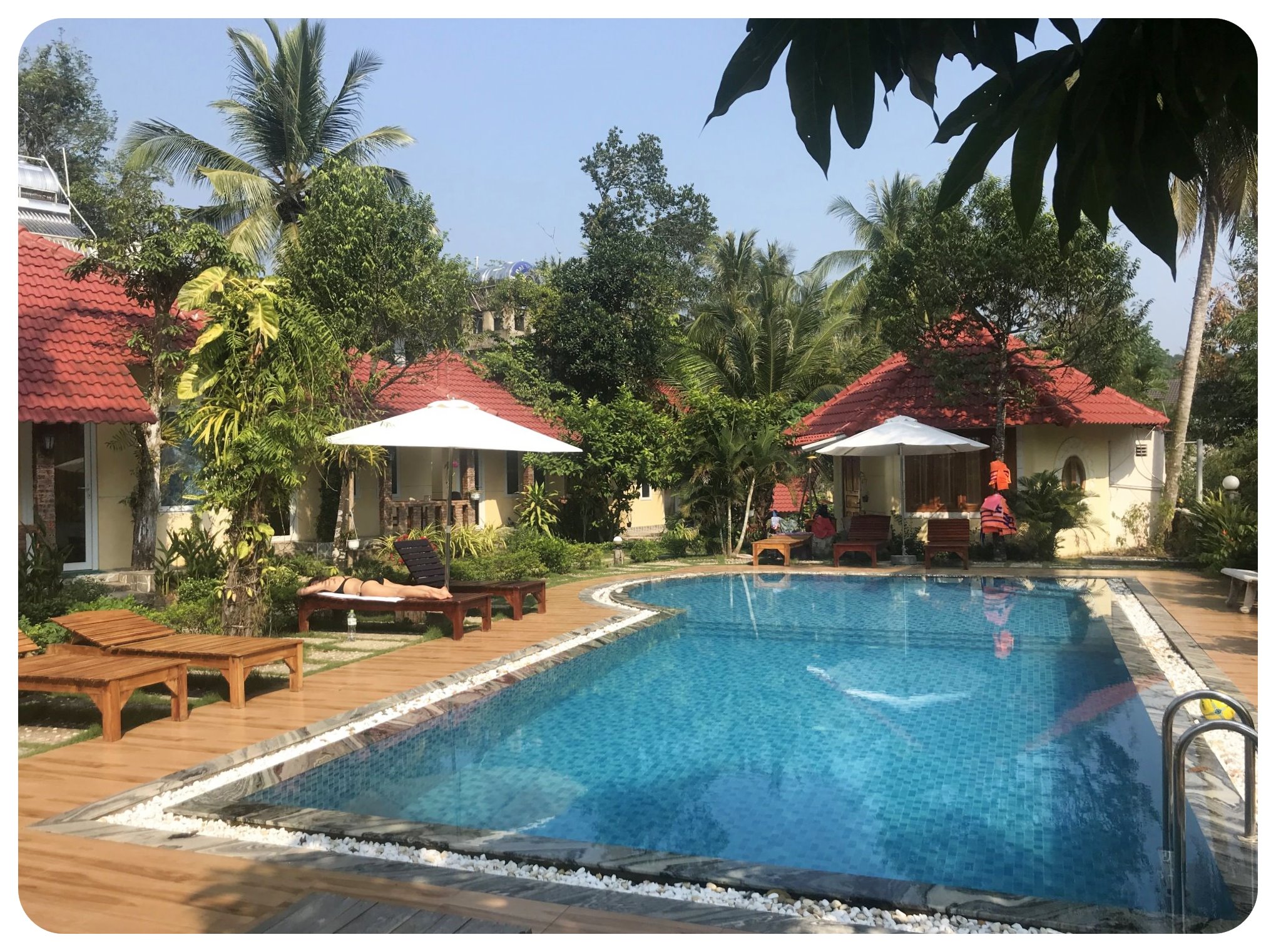 If you want a quiet getaway with a few restaurants nearby, stay on the eastern shore:
If you want a quiet getaway with a few restaurants nearby, stay on the eastern shore:
- Dugong Resort – Bungalow resort with a large swimming pool and a private beach. Rooms start at US$45 (incl breakfast)
- Lotus Home – new bungalow resort with several overwater bungalows and a private beach. Bungalows start at US$50, overwater bungalows start at US$99.
- Kiki Coconut Beach Resort – simple bungalows right on the beach. Rooms start at US$40 a night, including breakfast.
- The Pier Resort – new bungalow resort with several overwater bungalows and a beautiful swimming pool. Rooms start at US$78, overwater bungalows start at US$117 (including breakfast).
- Mango Beach Resort – Lush bungalow resort with a swimming pool. Rooms start at US$76 (incl breakfast)
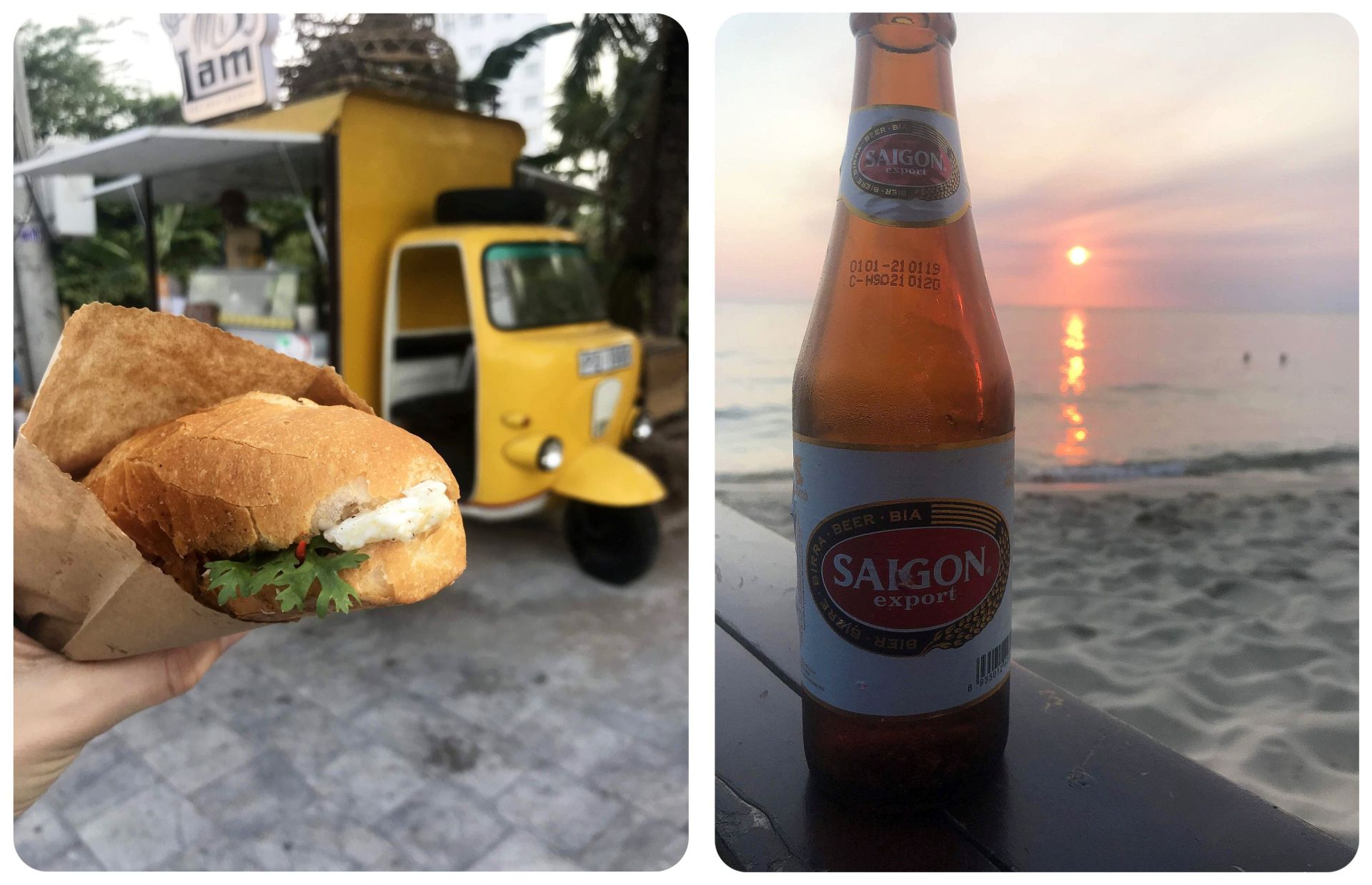
Where to eat in Phu Quoc
- The night market in Duong Dong, the island’s main town, starts every evening around 6pm. Good for seafood lovers, but there are also several restaurants around the market (including vegan restaurants).
- The Famous Italian – Authentic Italian food in Long Beach (on the main road). A bit pricey, but worth the splurge.
- The Rock Corner – Restaurant right on the beach / Long Beach area. Great for cocktails and burgers.
- The Embassy – Scandinavian Cafe on the main road in Long Beach. Great smoothie bowls / acai bowls / breakfasts.
- Ganesh Indian & Spice Indian – two solid Indian restaurants in Long Beach, close to each other on the main road.
- Banh Mi LAM – bright yellow banh mi cart with cheap Vietnamese sandwiches on the main road in Long Beach
- Mango Bay Restaurant – great Vietnamese food at Mango Bay Resort in Ong Lang Beach
- Rory’s Wreck – mix of Western food and seafood dishes. Great for drinks.
- Rest Stop – inside the Pier Resort. Worth a stop for their exquisite coconut iced coffee.
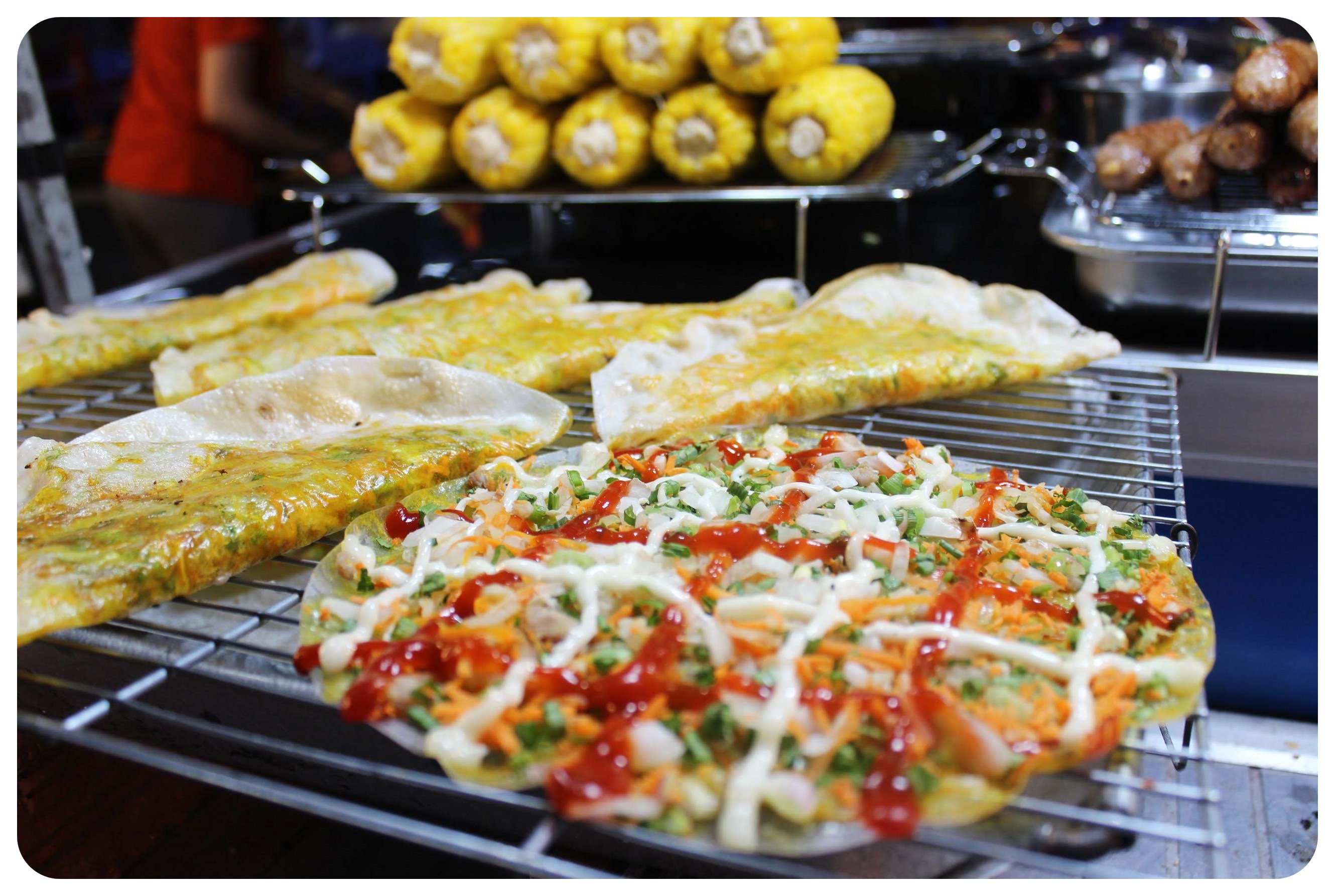

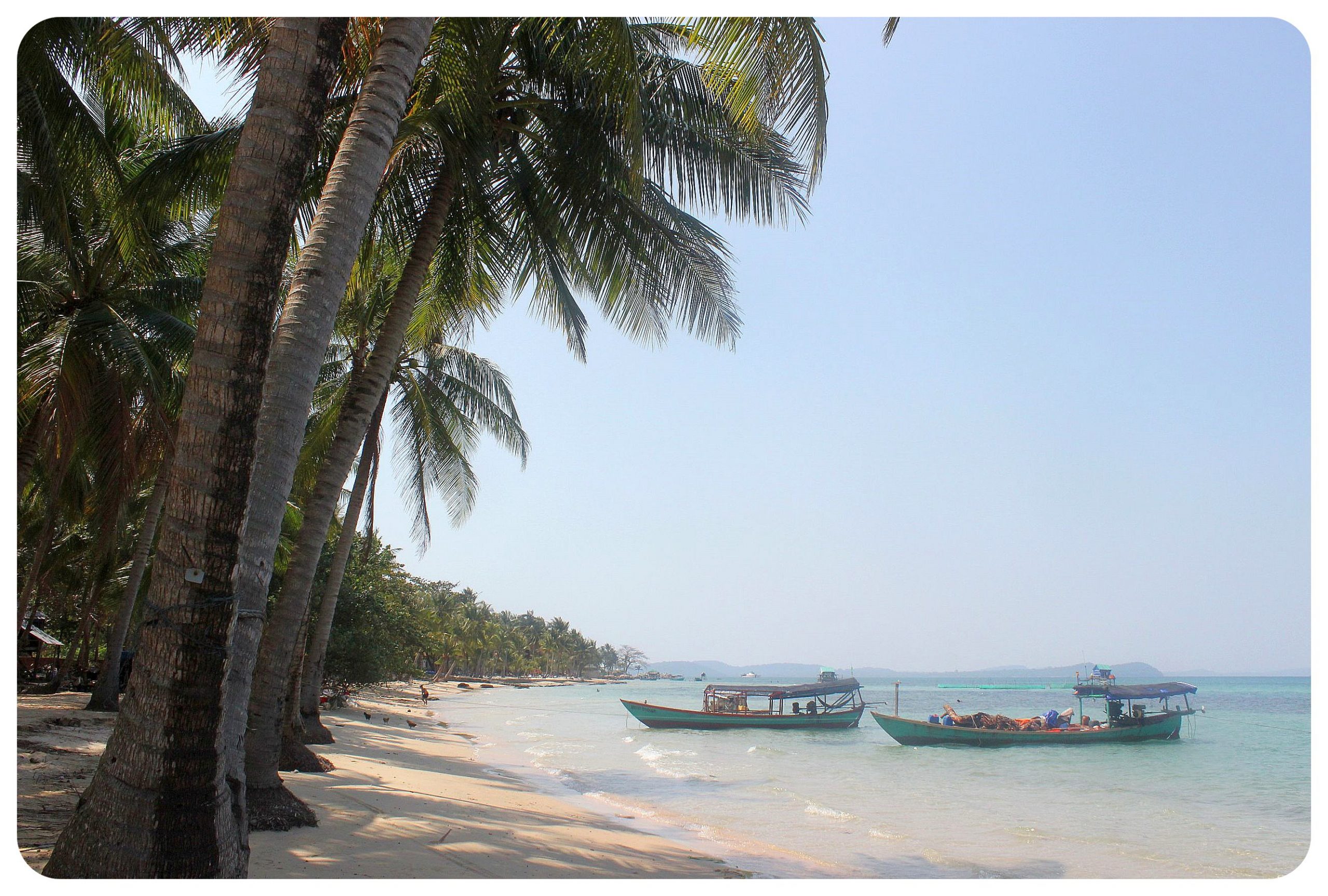


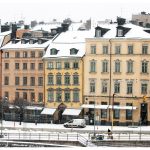

Rae Ann
Wednesday 22nd of October 2025
Hi! Loved the article and seeing all your beach pics really makes me want to visit. Just a note, Tom's website is the "Vietnam Coracle" not Chronicle. Coracles are those circular, bamboo boats that are so common here in Vietnam, easy mistake to make. I've used his blog a bunch and found it quite helpful, so I thought I'd drop you a note.